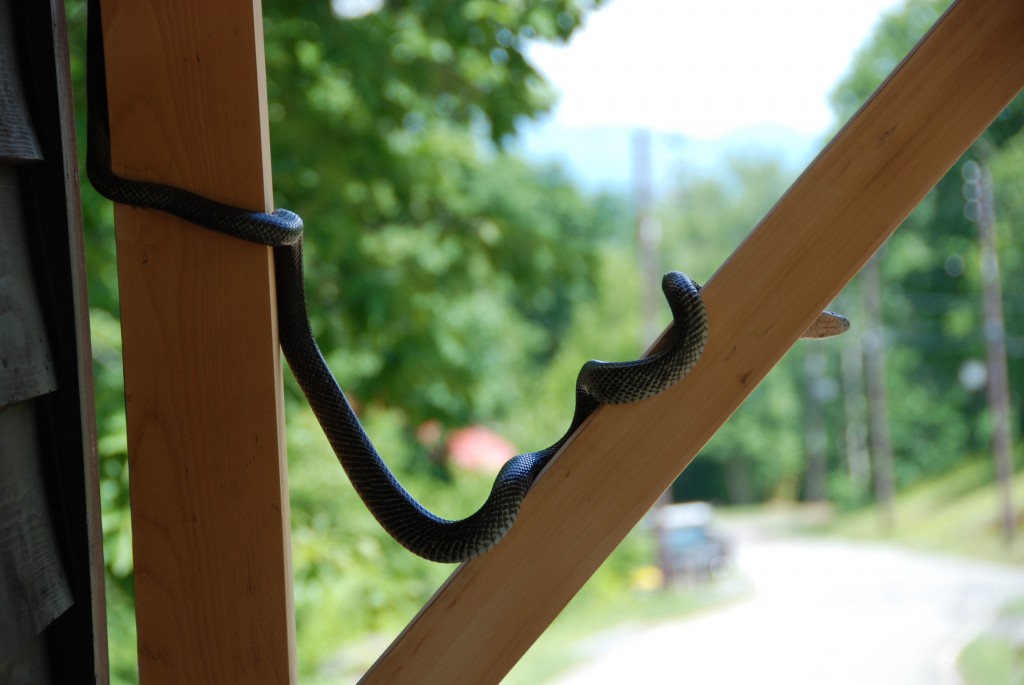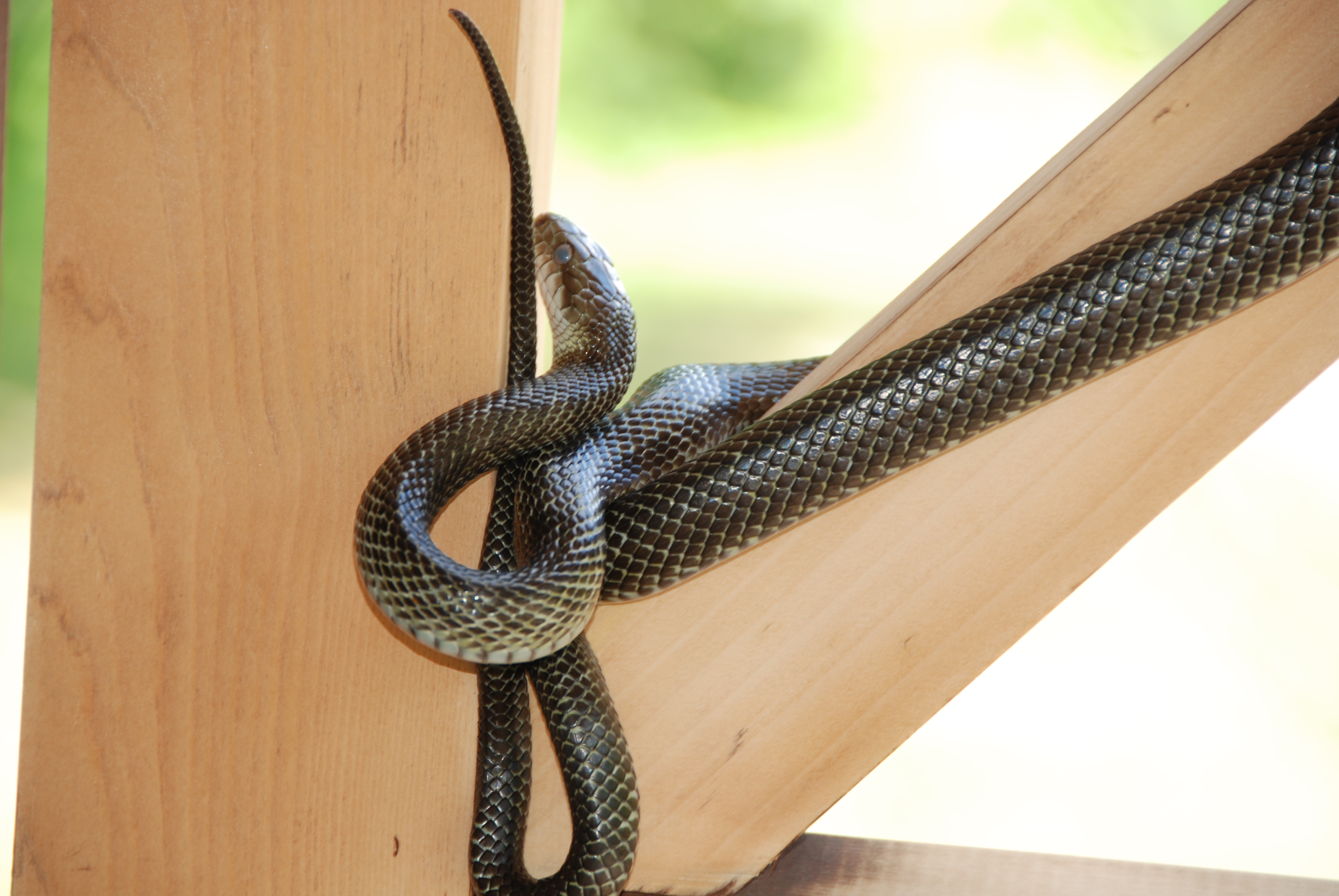Snake Encounters of the Second Kind

It is early autumn in Hokkaido and my wife has returned to our house near Yotei to confront her fears of the local wildlife — and perhaps do a little painting. The Niseko area has abundant fauna this time of year: tanuki, foxes and hares; owls, pigeons and numerous other birds; kagimushi, mosquitoes and killer bees. However the most domesticated of all is our resident snake and thereby lies a story.
As background, I should explain that there are two types of snakes in Hokkaido. One is a mamushi, a type of pit viper that is deadly poisonous and the other, the aodashi, a kind of rat python that is not venomous at all. How do I come to be so well briefed on herpetology? Well my wife Heather was bitten last summer while weeding in the garden, in my view an unnecessary act of courting danger.
She finished her outdoor travails then came into the house (where I had been coiled up, ‘toguro o maku’, reading and listening to music. She asked my opinion on some small ‘bites’ on her leg that were causing pain. I suggested mosquitoes but on closer inspection there seemed to be three sets of punctures – each of them evenly spaced. They really did look like snakebites but of a very tentative snake as only a single set of punctures had drawn blood.
Welcome to the internet. Here I learned of the two varieties and was warned that if bitten by a mamushi you need to get some anti-venom very quickly. As the next day my wife was not only upright but back in the garden tempting fate – ‘yabuhebi’, we assumed that the second, non-venomous variety was the culprit. There were some other more obvious hints. The snake had left its skin on the front steps when we arrived the week before — sort of staking out its territory and there had been earlier sightings in the woodshed where it would sit on a beam staring at me as I stacked logs for the winter.
After the big event in the garden, it took to winding itself around the rail on our porch so that it was not possible to get to the front door without the aodashi’s permission. As a consequence, Heather took to coming into the house through the garage until I courageously shooed the doorkeeper away with a broom.
Despite the assurances of the internet, the affected part of the leg remained swollen and red which led to some concerns about the diagnosis. We did what everyone else does in our parts and asked around for advice and were offered diagnoses of infections and even paralysis!
Once again the internet provided help — specifically from the Venom Research Unit of the University of Melbourne. I emailed off a plea for advice to an anonymous looking help link on a Saturday night expecting very little by way of response but was delighted to find an answer next morning to the effect that we should not worry about the bite itself nor would secondary infection be a concern. If we really wanted to be sure, perhaps a tetanus booster would be in order.
Sadly the Kutchan Hospital was closed except for emergencies — a funding problem (and a real tragedy for locals as it does a great job) but our friend, neighbour and skilled medical translator, Izumi-san took us down to a local doctor for the requisite injection. In the course of the consultation, he proceeded to tell us the story of a patient who had come in with a mamushi bite on his nose. The patient was a local farmer and had killed the snake and put it in a bottle of sake to give him extra vitality (one can only guess at the end purpose!). He left it for some months to ‘ferment’ and then on taking the cork out the snake leapt up and bit him. This seemed a little fanciful but research suggests that it is possible for the snakes’ nervous system to still function after death – and by this account – even after pickling.
2013 is the Year of the Snake in the Japanese horoscope and it is said that snakes never forget a good or bad deed done to them. Although not superstitious, Heather did think at the time that she may have stepped on the aodashi and so she is somewhat cautious of serpentine retribution on her return to our North Hills house.
The incident has confirmed for me — and I hope for her — that gardening is a dangerous pursuit. Perhaps she will leave the weeds alone — the first snows will make them ‘disappear’ and they are not too far away.
Editor’s note: Yotei Views is an occasional feature highlighting a behind-the-scenes look at life in the Niseko area. To submit your own Yotei Views column, contact us with your proposal.




